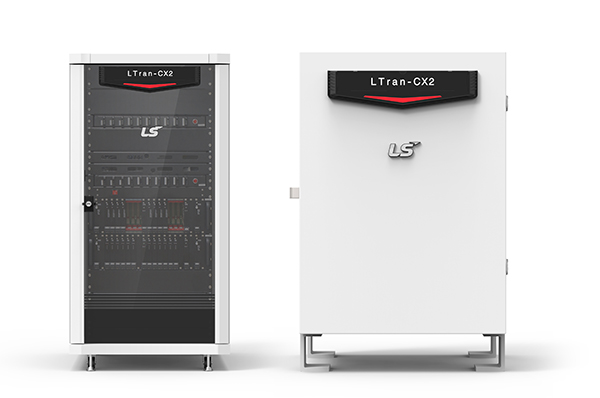MEDIA
LS NEWS
LSIS Penetrates the Philippines’ Metropolitan Train Control System Market
LSIS2016-07-21
■ LSIS becomes first Korean company to enter Manila’s urban railway market by securing line no.3 project worth US$ 16.33 million
■ Company earns recognition for competitiveness of its railway solution LTran-CX, recipient of the world’s highest safety rating
■ LSIS plans to target Southeast Asian markets in line with expansion of the Metropolitan railroad markets as an alternative toentry barriers due to its domination by European signalization companies, and to secure opportunities to win similar orders in the future.” “Since traffic congestion is severe in all of Southeast Asia, LSIS is propelling policies aimed at expanding the market for urban
traffic congestion
LSIS has become the first Korean company to enter the Philippines’ metropolitan train control market, which has largely been
dominated by European companies until now.
LSIS announced that it had won the project to replace the signalization on line no. 3 of Manila’s metro system, which is worth
US$ 16.33 million (approx. \19 billion), from Hanwha Corporation on July 20.
The project is a part of a larger project for maintenance and replacement of the train control system of line 3 of the Manila metro,
which is being carried forward by the DOTC (Department of Transportation & Communication), and involves the replacement of
systems that have become obsolete after seeing more than twenty years of service.
As the main business operator of the project, Hanwha Corporation will manage the overall business while LSIS will provide
the solution for the relevant train control system.
LSIS will supply its own brand solution, LTran-CX (LSIS Transportation CBTC System), which will apply the CBTC
(Communication Based Train Control) system to a 13.4km-long section of the urban railway that penetrates Manila, over a
contract period of two years.
Developed by LSIS based on wireless communications in 2014, LTran-CX is a train control system that maximizes control
efficiency by exchanging train locations via radio communication between a train’s on-board system and a ground system. It is
characterized by the application of the ‘Moving Block’ system, which checks the locations and velocity of proceeding and
follow-up trains and adjusts the interval between them directly from an on-board console.
While the existing fixed block system controls a train’s velocity through a track circuit built into certain sections of a track, the
Moving Block system exchanges information on train intervals via wireless communication in real time, thereby minimizing the
waiting time at stop signals. This not only increases a train’s operating speed but also enhances operational efficiency and safety
at the same time.
A company executive explained that LSIS was able to win the contract due to the project owner’s recognition of its safety and
quality competitiveness, which is largely attributable to the fact that LTran-CX had already received SIL 4 (Safety Integrity Level),
the (world’s?) highest safety rating, in 2014.
Asia’s signal and electricity (E&M) market is expected to be worth about 1.2 trillion won in 2016, and to expand massively every
year due to concerted government-led efforts to improve metropolitan train control systems around the globe.
An official of Hanwha Corporation said, “This project was made possible by intimate cooperation between the head office of the
Manila branch and LSIS based on the long-term trust formed between Hanwha and the Philippines’ government during the
construction of a dome-shaped concert hall, the Philippines Arena, and the export of domestic defense products to the
Department of National Defense.” He also mentioned that “Hanwha) is planning to establish a foothold in the country in
order to win projects related to Manila’s LRT line 6 and BRT in the future, in cooperation with top manufacturers such as LSIS.”
Meanwhile, an official from LSIS said, “It is extremely meaningful to enter the Philippines’ metropolitan market, which had high
entry barriers due to its domination by European signalization companies, and to secure opportunities to win similar orders in
the future.” “Since traffic congestion is severe in all of Southeast Asia, LSIS is propelling policies aimed at expanding the market
for urban railways as an alternative to road traffic, and is planning to actively target this market.”
-
LSIS Penetrates the Philippines’ Metropolitan Train Control System Market
LSIS2016-07-21 -
LSIS Presents Smart Solution for Convergence at Hannover Messe
LSIS2016-04-26 -
LSIS “winged” for Flight to the U.S. ESS Market
LSIS2016-04-04 -
LSIS Co. set the Standard for ‘Korean Smart Factory’ at the Greatest Domestic Automation Exhibition.
LSIS2016-03-10 -
Lsis Targets Japanese Smart Energy Market with Its Convergent?Integrated Solutions
LSIS2016-03-03